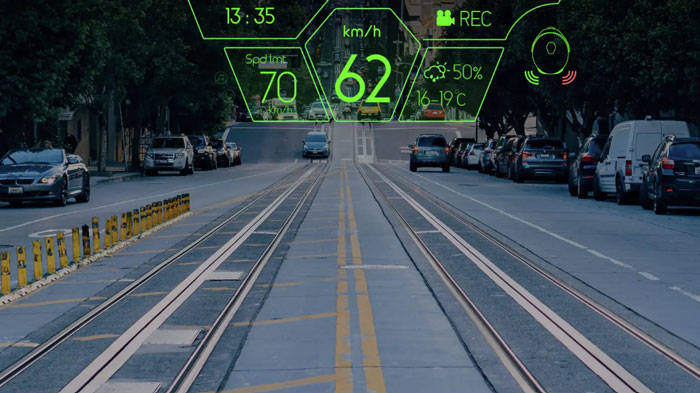
(Nweon May 22, 2023) The University of Melbourne recently issued an article stating that through the cooperation between KDH Design Corporation and the Melbourne Nanofabrication Center, they have made a major breakthrough in the field of augmented reality technology and successfully used 3D printing and low-cost Cost Materials creates the world's first flexible and transparent AR display. "This development has the potential to revolutionize the use of AR across various industries and applications," the team said.

AR technology can overlay digital content into the real world, thereby enhancing users’ perception of the environment and real-time interaction. But creating flexible augmented reality technology that can adapt to light sources at different angles has been challenging. Current mainstream AR manufacturing relies on glass substrates, which involve time-consuming and expensive processes such as masking, lamination, or cutting.
So, the University of Melbourne collaborated with KDH Design Corporation and the Melbourne Nanofabrication Center to develop a transparent AR display using low-cost optical-quality polymer and plastic materials and made breakthrough progress, successfully using 3D printing and low-cost materials create the world's first flexible and transparent AR display.
Then, KDH Design Corporation, which is famous for manufacturing AR motorcycle helmets and military goggles, will apply this technology to AR glasses, AR sports goggles, AR headsets, AR automotive displays and other devices.

According to reports, the newly developed display is both flexible and multifunctional, allowing it to be bent and adapted to different shapes. This flexibility gives designers more freedom to adapt to various product form parameters. In addition, the display is transparent, ensuring that users have a natural and smooth perception of the real world while superimposing digital content.
By using 3D printing technology, teams can have precise control over design and production, resulting in higher quality products. It simultaneously opens up the possibility of cost-effective and scalable mass production.
The University of Melbourne stated that this breakthrough marks a major advancement in augmented reality technology and brings huge application potential. For example, in the gaming industry, flexible and transparent AR displays can be integrated into headsets to provide a more immersive gaming experience; in education, AR displays can be integrated into tools and simulations to promote interactivity and engaging Learning experience; in the field of healthcare, augmented reality displays can be used for medical training to help surgeons obtain real-time information during operations; in addition, potential applications can be extended to areas such as transportation and tourism.
KDH Design Corporation said that after four years of collaborative research, they have realized the ultimate AR technology envisioned. The technology is ultra-thin, energy-efficient and lightweight, making it suitable for near-eye applications such as AR glasses and goggles. The team next plans to apply the AR technology to transparent displays such as car windshields.
They further highlighted that collaboration with University of Melbourne researchers ensured the prototype was developed in line with their vision. They are now ready to commercialize this technology for a wide range of exciting applications.
The above is the detailed content of University of Melbourne uses 3D printing, low-cost materials to create flexible and transparent AR displays. For more information, please follow other related articles on the PHP Chinese website!
 How to use the atom editor
How to use the atom editor
 resample function usage
resample function usage
 How to use the choose function
How to use the choose function
 How to create virtual wifi in win7
How to create virtual wifi in win7
 How to solve the problem that the device manager cannot be opened
How to solve the problem that the device manager cannot be opened
 How to use the length function in Matlab
How to use the length function in Matlab
 What does frame rate mean?
What does frame rate mean?
 The difference between console cable and network cable
The difference between console cable and network cable




